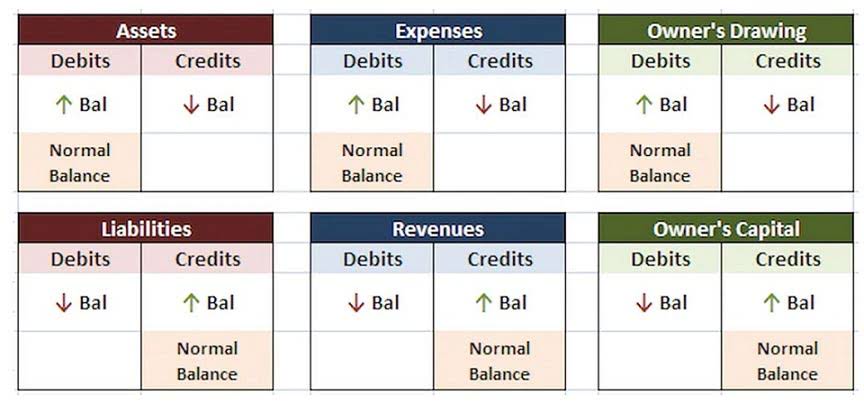
It is only possible to characterize items as unusual or exceptional under specific conditions. The IFRS and US GAAP are the two common accounting standards that businesses adhere to. These accounting standards are needed to ensure that a company’s financial statements and information are accurate and can be compared to other companies’ financial statements. The original logic for OCI was that it kept income-relevant items that possessed low reliability from contaminating the earnings number (profit for the year). The OCI figure is crucial however it can distort common valuation techniques used by investors, such as the price/earnings ratio.

What’s the Difference Between Net Income and Comprehensive Income?
In March 2018 the Board published its Conceptual Framework for Financial Reporting. It suggests that the SOPL should provide the primary source of information about the entity’s financial performance for the reporting period. However, the Board may also provide exceptional circumstances where income or expenses arising from the change in the carrying amount of an asset or liability should be included in OCI. This will usually occur to allow the SOPL to provide more relevant information or provide a more faithful representation of an entity’s performance. Whilst this may be an improvement on the absence of general principles, it might be argued that it does not provide the clarity and certainty users crave.
FRS 102 Summary – Section 23 – Revenue
- Under FRS 102 in order for an operation/business to be disclosed as discontinued, the operation/business must have been disposed of (in relation to a sale) or have been closed (in relation to a termination) by the balance sheet date.
- The multiple-step format with its section subtotals makes performance analysis and ratio calculations such as gross profit margins easier to complete and makes it easier to assess the company’s future earnings potential.
- This means that investors and creditors can often estimate the company’s future earnings and profitability based on an evaluation of its past performance as reported in net income.
- Disclosure of operating profit is not required, however, an entity can elect to show this as long as the expenses within it are actually operating expenses by nature and do not exclude such type of expenses.
- Refer to the statement of comprehensive income illustrating the presentation of income and expenses in one statement.
- Compare Financial Results to Budgeted Expectations Are you looking for an Actual vs Budget Report Template to help you track financial performance?
Once you have viewed this piece of income summary content, to ensure you can access the content most relevant to you, please confirm your territory. By submitting, you agree that KPMG LLP may process any personal information you provide pursuant to KPMG LLP’s Privacy Statement.
Provide Necessary Disclosures
The IFRS, on https://x.com/bookstimeinc the other hand, stands for International Financial Reporting Standards. IFRS is dictated by the International Accounting Standards Board (IASB) and followed by many countries outside the US. Nevertheless, deciding which set of standards to use when making financial reports like the income statement would depend on whether the company operates in the US or internationally.
Statement of financial position, statement of comprehensive income, and statement of changes in equity
- Comparing a company’s current performance with its past performance creates trends that can have a predictive, though not guaranteed, value about future earnings performance.
- Profit and loss for the period and total comprehensive income for the period are allocated in the statement of comprehensive income to the amounts attributable to non-controlling interests and owners of the parent.
- It provides a comprehensive view for company management and investors of a company’s profitability picture.
- It is simply incorrect, to state that only realised gains are included in the statement of profit or loss (SOPL) and that only unrealised gains and losses are included in the OCI.
- Since it includes net income and unrealized income and losses, it provides the big picture of a company’s value.
It is simply incorrect, to state that only realised gains are included in the statement of profit or loss (SOPL) and that only unrealised gains and losses are included in the OCI. For example, gains on the revaluation of land and buildings accounted for in accordance with IAS 16, Property Plant and Equipment (IAS 16 PPE), are recognised in OCI and accumulate in equity in Other Components of Equity (OCE). On the other hand, gains on the revaluation of land and buildings accounted for in accordance with IAS 40, Investment Properties, are recognised in SOPL and accumulate in equity as part of the Retained Earnings (RE). However, this should not be frequent and should be reserved for items (e.g natural disasters) that justify a prominence greater than that achieved by separate presentation and disclosure. Such items should also be classified by nature or function, in the same way as the usual or non-exceptional amounts. Also, companies should provide an explanation of the nature of the amount and why the item has been classified as unusual or exceptional.


Single-step, multiple-step, or any condensed formats used in a statement of income are not specified GAAP requirements. Smaller privately held companies tend to use the simpler single- step format, while publicly traded companies tend to use the multiple-step format. When condensed formats are used, they are supplemented by extensive disclosures in the notes to the financial statements and cross-referenced to the respective line items in the statement of income. However, there is a general lack of agreement about which items should be presented in profit or loss and in OCI. The interaction between profit or loss and OCI is unclear, especially the notion of reclassification and when or which OCI items should be reclassified. A common misunderstanding is that the distinction is based upon realised versus unrealised gains.
IFRS vs GAAP Income Statement: Differences and Similarities

A statement of comprehensive income, which covers the same period as the income statement, reflects net income as well as other comprehensive income, the latter being unrealized gains statement of comprehensive income and losses on assets that aren’t shown on the income statement. The statement of comprehensive income gives company management and investors a fuller, more accurate idea of income. In 2007, the IASB (International Accounting Standards Board) published a revised version of IAS 1 that included some changes to the presentation of comprehensive income. One of the key changes was to require companies to present a single statement of comprehensive income, rather than separate statements for profit or loss and other comprehensive income.